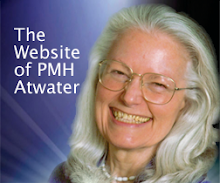The Story of Rickie Bradshaw
 He was a bag boy at a local grocery store, earning money for college. As he loaded groceries into the trunk of an elderly woman’s car, parked parallel to the front of the store, a second car parked behind suddenly lunged forward. He dropped, pinned at chest level between two metal bumpers. The elderly woman panicked when she realized what had happened, and mistakenly hit reverse. . . grinding his body into strings and pulp and clumps of skin and organ parts. His spine, the only thing left whole.
He was a bag boy at a local grocery store, earning money for college. As he loaded groceries into the trunk of an elderly woman’s car, parked parallel to the front of the store, a second car parked behind suddenly lunged forward. He dropped, pinned at chest level between two metal bumpers. The elderly woman panicked when she realized what had happened, and mistakenly hit reverse. . . grinding his body into strings and pulp and clumps of skin and organ parts. His spine, the only thing left whole.
Sirens, police, ambulance. All did what they could to get him to a hospital. Dead on arrival. His gurney pushed to one side. What saved him? The hospital he was taken to turned out to be a teaching hospital. A group of students just happened to be “right there,” looking for a fresh cadaver. Take that one, they were told. In an adjoining room, they hooked up the lifeless body to a heart monitor then began “playing,” seeing what might happen if they attached this to that, pulled here and there. After minutes, who knows how many, they noticed the heart monitor registering a beating heart. More concerned about the equipment than Rickie’s body, one went in search of a physician to report what surely must be a faulty monitor. One look by that physician called in the pros. Rickie clearly remembers everything each student did - as he hovered above them. This, the miracle of Rickie Bradshaw’s recovery, was voted “Trauma Case of The Year” by an American medical society: his case published in a precursor to Vital Signs Magazine in 1980. By then, he had garnered much attention, his case matching what Raymond A. Moody, Jr. M.D., Ph.D.,had described in his book Life After Life: leaving his body, seeing a light, greeting relatives long dead, being shown the future, what could actually happen if humankind didn’t make significant changes.
What few knew is that for a time after surgery he was kept alive in an iron lung, an iron lung that flickered, seemed sometimes to almost quit, room lights going off and on, a nurse that verified everything - yet - who would believe any of this. Rickie told me at the time he prayed and prayed, almost begging God to keep that iron lung working. I told him about electrical sensitivity being normal for NDErs. He wished he had known.
While dead he had been shown all of history, what would happen to our world if humankind didn’t make needed changes. Although he couldn’t divulge the “endgame,” he felt he could change hearts and minds by sharing his story, so this is exactly what he did, speaking on television shows, at colleges and universities, wherever else he could. My husband Terry and I met him at one of his talks at the University of Virginia. We became friends. He had one through a kind of hell divorcing a wife who did everything she could to cheat him out of the insurance money paid for his care. He and his second wife, now members of the Baha’i faith, hosted meetings in their home, especially wanting us to join because their new faith celebrated bi-racial unions.
Rickie lived on the edge of things, existing thanks to feeding via intravenous tubes. “You get used to this,” he murmured. When at long last he could once again taste real food in his mouth. . . what a celebration he had just savoring flavors. It bothered him deeply the rancor that once existed between him and his first wife, yet now only love and forgiveness existed within him, even for her. Maybe that’s why he responded so quickly when his new wife started objecting to all the talks he gave, time away on the road, people calling on the phone. One day both seemed to magically disappear. Moved away. Just recently a friend of mine sent a copy of his obituary to me. He died in 2015, Ohio, Catholic, married. No mention of his Baha’i faith, only hers, or what had once happened to him and how he used his story to help change the lives of others - millions - very much for the better.
Labels: NDE, Rickie Bradshaw


0 Comments:
Post a Comment
<< Home